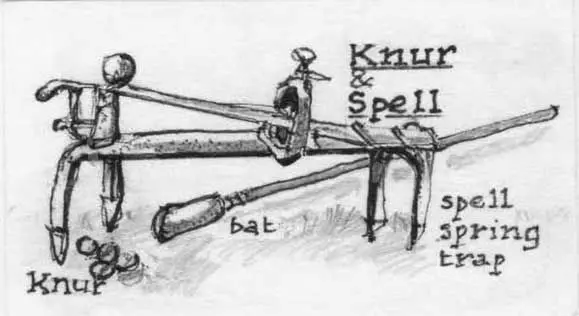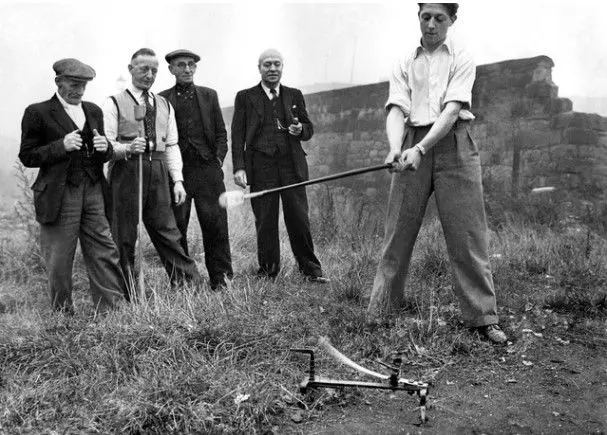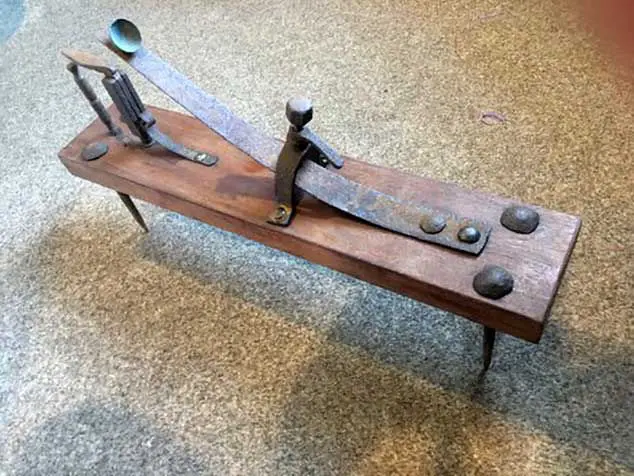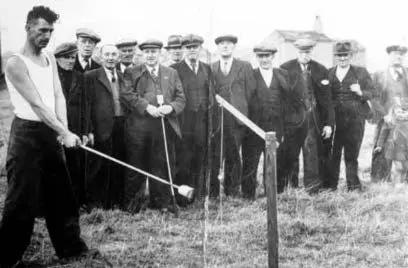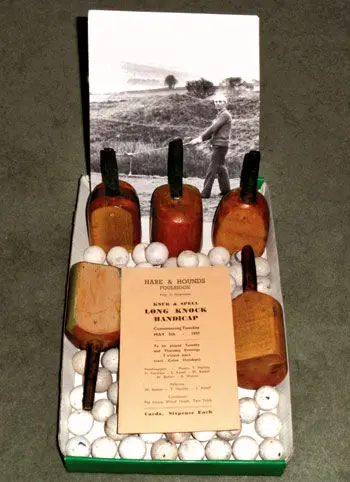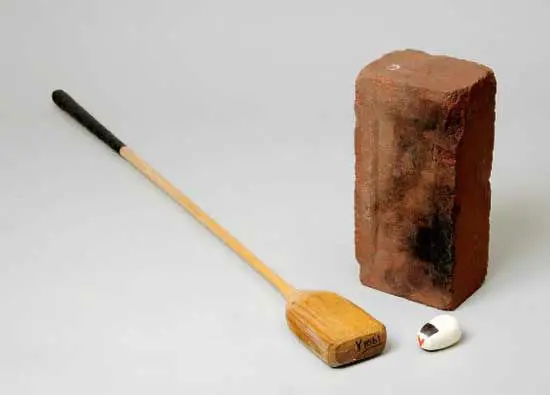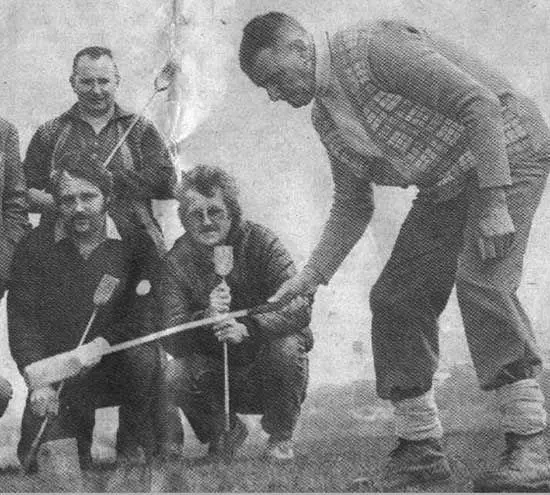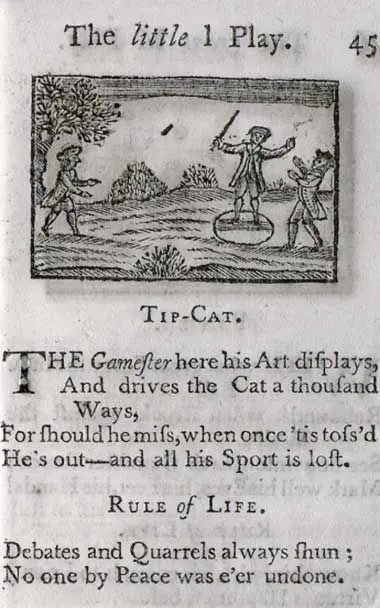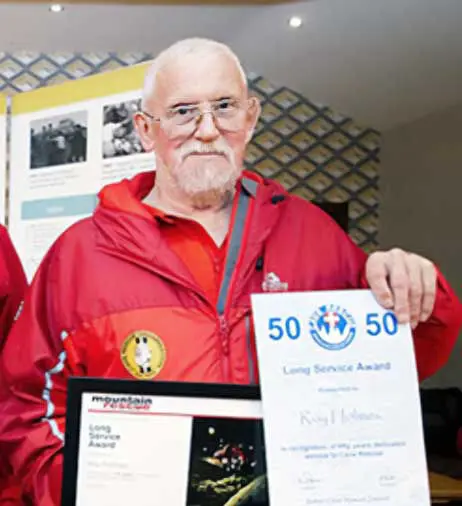
Roy Holmes received a long service award from the Cave Rescue Council in 2019
Image credit: caverescue.org.uk
Knur and Spell
This monologue in Yorkshire dialect was written by Roy Holmes of Batley, who used to perform it regularly at Batley Raggers Folk Club which met every Sunday night at the Victoria Hotel, Hick Lane, Batley, in the late 1960s.
Whenever Roy performed it at the folk club, every time Batley was mentioned there were loud cheers, and at the mention of Ossett booing prevailed. Another of Roy’s monologues that went down well with the partisan folk club audience was ‘The Battle of Towton’, recounting the historic ‘War of the Roses’ battle where in 1461 the ‘House of York’ won a decisive victory over the Lancastrian forces.
Roy, who was a keen potholer, was a founder member of the ‘Heavy Woollen District Pothole Club’, and he along with Brian Gaskin, another member, in 1975 formed G & H Products, Batley, which went on to become ‘Craghoppers’ the outdoor clothing manufacturer.

